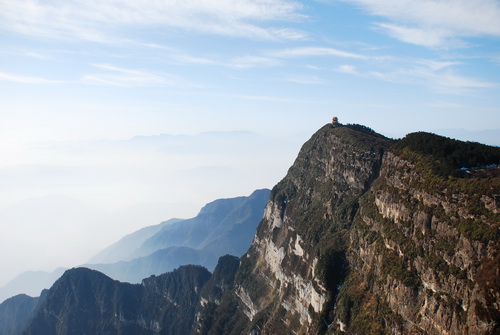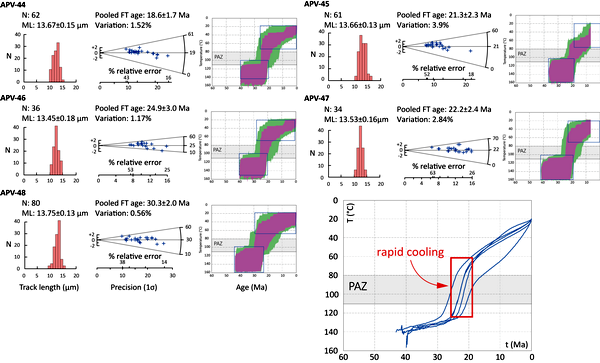In recent years, because of its steep topography and complex geological evolution history, the eastern margin of the Tibetan Plateau (EMTP) has attracted much attention from both Chinese and international geologists. As a famous scenic spot, the Emei Mountain receives millions of tourists from all over the world. As a thrust structure, it is the easternmost front-thrust of the Yaan-Emei fold belt that is wedged into the Chengdu plain.
Previous studies mainly focused to the Longmen Mountain, which lies on the northern segment of the EMTP. However, the Emei Mountain region, lying on the southern EMTP, has largely been ignored. Detailed structural and chronological comparison between northern and southern segments of the EMTP can help us to better understand the temporal-spatial evolution history of the EMTP and even the Tibetan Plateau.
Dr. Kai Meng from IGGCAS, along with collaborator Prof. Erchie Wang, focused on the uplift mechanism and chronology of the Emei Mountain, analyzed the deformation pattern and kinematic of the Yaan-Emei fold belt, and compared and discussed the differences between the northern and southern EMTP in terms of structural deformation and uplift time. Distinct from the large-scale thrusting and mountain uplift along the narrow Longmen Mountain in the northern EMTP, a broad and gentle Yaan-Emei fold belt lying in the southern EMTP absorbed and accommodated most of the geological stress from eastward and southeastward extrusion of the plateau. Apatite fission track (AFT) results show that uplift of the Emei Mountain occurred during ~25-20 Ma.
The threshold and main stage of uplift of the Emei Mountain possibly lagged behind the Longmen Mountain by approximately 5 Myr in the Late Oligocene to Early Miocene. As the leading edge of transition area, the uplift of the Emei Mountain suggests that the eastward propagation of the EMTP was time transgressive from the Late Oligocene to Middle Miocene.
This work has now been published in the Journal of Asian Earth Sciences:
Meng, K., E. Wang, and G. Wang, Uplift of the Emei Shan, western Sichuan Basin: Implication for eastward propagation of the Tibetan Plateau in Early Miocene, J. Asian Earth Sci., 115, 29-39, doi: 10.1016/j.jseaes.2015.09.020

Fig.1 Cliff in front of the Jinding (3099 m) of the Emei Mountain.

Fig.2 Diagrams of Apatite fission track (AFT) results and T-t paths.
Contact:
MENG Kai
The Tethys Research Center, IGGCAS
E-mail: michael.meng@mail.iggcas.ac.cn